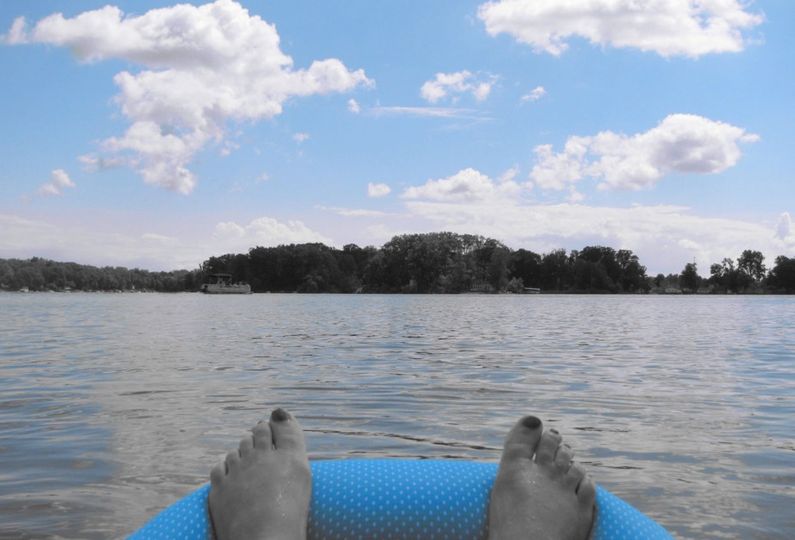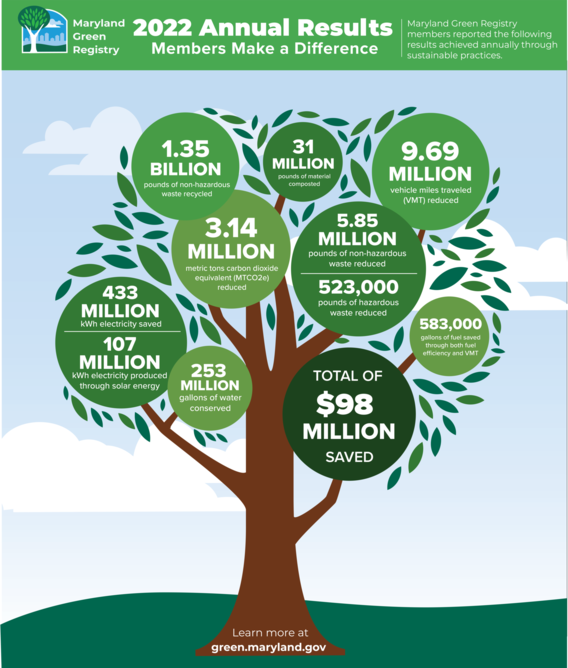eMDE: Secretary’s Blog, new air quality forecasting system, and more



New Tools for Environmental Justice, MDE Documents
One thing that really caught my eye after being appointed MDE Secretary in June by Governor Hogan was all the recent progress we have made in serving overburdened communities throughout the state thanks to our Maryland Commission on Environmental Justice and Sustainable Communities and our internal Environmental Justice (EJ) workgroup.
Case in point is the EJ screening and mapping tool which was posted on our website earlier this month. The tool is being used by MDE staff, permit applicants, and the general public to facilitate engagement during the permitting process. It incorporates demographic and socioeconomic data with MDE elements like industrial facilities, wastewater treatment plants and proximity to dams to prioritize EJ concerns.
The tool uses American Census Survey data to identify three key socioeconomic indicators that were recently enacted into a law which created definitions for overburdened and underserved. The indicators are areas with a minority population of 50% or more, a poverty rate of 25% or more and a limited English proficiency of 15% or more. The overall socioeconomic score will be used by MDE and permit applicants to inform their decisions on siting, permitting, enforcement and infrastructure improvements.
The bottom line is that this tool gives all Marylanders equal access to information about potential environmental hazards in their communities and to participate in the decision-making process of environmental permits and supplemental environmental projects. It’s a great thing to help us achieve the goal of environmental equity.
Here are other issues, progress reports and updates on my radar screen:
West Virginia v. Environmental Protection Agency
While the EPA’s authority to regulate greenhouse gas emissions has now been curtailed because of the U.S. Supreme Court ruling, the authority of states to reduce greenhouse gas emissions has not changed. Maryland has one of the most ambitious greenhouse gas reduction goals in the country. Our regulation of carbon pollution from the state’s power plants through Maryland’s participation in the Regional Greenhouse Gas Initiative has rapidly reduced power plant pollution, contributed to tremendous improvements in the quality of the air that Marylanders breathe and generated significant benefits to our economy. In addition, MDE will continue to implement Maryland’s Greenhouse Gas Reduction Act, Climate Solutions Now Act, and other climate change laws, which require economy-wide greenhouse gas emissions reductions of 60% below 2006 levels by 2031 and net-zero emissions by 2045. Greenhouse gas emissions from Maryland’s electricity supply decreased nearly 60% from 2006 to 2020.
Bay Report Card
The Chesapeake Bay Watershed improved its overall grade to C+ in last month’s annual report card of the University of Maryland Center for Environmental Science. All seven reporting areas – Maryland, Virginia, New York, Pennsylvania, Delaware, West Virginia and the District of Columbia – reported better water quality and decreased presence of nitrogen and phosphorus while aquatic grass spread on the bay floor. Maryland has been a leader in bay protection and reports such as this show the progress that is being made.
Back River, Patapsco
Returning Baltimore City’s Back River and Patapsco wastewater treatment plants (WWTP), two of the largest such plants in Maryland, to full operational compliance is one of our top priorities. Since April, when Maryland Environment Service (MES) arrived on site, nitrogen pollution from the Back River WWTP has been reduced by more than half of previously reported levels. The operational failures that occurred at these two Baltimore City plants are unacceptable and MDE continues to use all regulatory tools available to ensure that the Back River facility is operated in a manner that will protect public health and the environment. In June, MDE and Baltimore City leadership reached an agreement on a revised order that requires the city to cooperate with MES in order to prevent or correct water pollution and ensure the Back River facility is operated in a manner that will protect public health. MDE is currently pursuing a similar agreement with the city for the Patapsco WWTP to ensure that both facilities have a clear path to achieving compliance with their permit limitations and ensure Maryland is on track to achieve its 2025 Chesapeake Bay goals.
PFAS Monitoring
We have been collecting data, which is now available for 429 of the 461 community water systems in Maryland, and MDE is in a position to apply the best science to safeguard citizens. The Per- and polyfluoroalkyl Substances (PFAS) results have been shared with the water systems and samples for the remaining systems are being collected this summer. Just as we did with the previous EPA PFAS lifetime health advisory level, the department intends to collect additional samples to confirm PFAS levels and work with the systems to find solutions that include treatment options and alternate sources. The department provided more detailed guidance to facilities earlier this month and MDE will continue to work with EPA to better understand these interim levels, their impacts for public health and options for public water systems moving forward.
Open MDE
We also launched another database earlier this month, Open MDE, that provides the public with easy to use and searchable platforms of MDE’s permitting and compliance assurance data with built in capabilities to view or download a wide array of our records and documents. Among the material available is citizen complaints, compliance inspections of regulated entities, violations resulting in both informal and formal enforcement actions, permits issued by the agency and records of reported sewage overflows to the agency. This is a big step forward in providing enhanced customer service for Marylanders, resulting in more efficiency in our operations.
• Air, Land, Water – Did You Know?
New Air Quality Forecasting System Unveiled
MDE has unveiled a new air quality forecasting system for the state that more than doubles the number of designated areas where forecasts and current conditions are available.
MDE’s Air Monitoring Program of the Air and Radiation Administration posted the new map at mde.maryland.gov/programs/air/AirQualityMonitoring/Pages/AQForecast.aspx.
The more localized statewide maps offer more exacting forecasts of ozone and fine-particle air pollution in accordance with the state’s topography.
The 10 forecast regions in the state have year-round particle pollution forecasts and ground level ozone pollution forecasts from April through September. They replace the previous air quality forecasting system, which had only four regional areas — Baltimore metro, Washington D.C. metro, Eastern Shore, and Western Maryland.
The former Baltimore metro region will have a more condensed metro region forecast and two additional regions: Northern Baltimore and Northeast Maryland. The panhandle of the state has been expanded into the Western Maryland and Hagerstown forecast areas. The Eastern Shore has been further refined into upper and lower sections. The former D.C. metro area will now consist of three forecast zones — Suburban DC, Southern Maryland, and Maryland Piedmont.
Read more
Healthy Beaches

Looking to beat the heat? Visit MDE’s Healthy Beaches webpage first to make sure the water is safe for your summer fun.
Use the interactive map to find the current conditions at your favorite beaches. Data is available during Maryland’s beach season, which runs from Memorial Day to Labor Day.
Also, be sure to avoid swimming near storm drains along the beach and within 48 hours of a heavy rain event, or until the water clears.
Maryland Green Registry Sustainability Awards

Secretary Horacio Tablada has announced this year’s Maryland Green Registry Sustainability Leadership Awards, given to five member organizations that have shown a strong commitment to sustainable practices, measurable results, and continual improvement. Also announced were the State Energy Awards, given to two state agencies for their energy reduction achievements.
Special recognition goes to the 2022 Sustainability Leadership Circle. These are former Leadership Award winners that have demonstrated their ongoing commitment to continual improvement by implementing significant new sustainable practices. They serve as an inspiration to all organizations by demonstrating that patience and persistence are often rewarded on the path to sustainability.
To learn more about these winners and the practices and projects they have implemented, just click on the links below. Please also check out this year’s annual results showing that the mighty members of the Maryland Green Registry are continuing to expand their efforts, reduce their environmental impacts, and save money year after year!
Sustainability Leadership Awards
Easton Utilities Commission
Howard Community College
Linganore Winecellars
Pete Pappas & Sons
Tobacco Barn Distillery
State Agency Energy Award
Maryland Public Television
State Building Energy Award
Maryland Department of Transportation
Harry R. Hughes Building
2022 Sustainability Leadership Circle
City of Bowie
IKEA Customer Fulfillment
• Have an Idea?

Email the editor
We’re always looking for ideas to make eMDE even better. Here’s a chance to tell us what you think. Have some thoughts on what we can do better or things you’d like to see more of? An idea for a specific story? We want to hear from you. Contact us at editor.mde@maryland.gov.
MDE’s MISSION
To protect and restore the environment for the health and well-being of all Marylanders.
VISIT OUR WEBSITE
Maryland Department of the Environment, 1800 Washington Boulevard, Baltimore, MD 21230
Maryland Department of the Environment
Copyright © 2022. All Rights Reserved.
